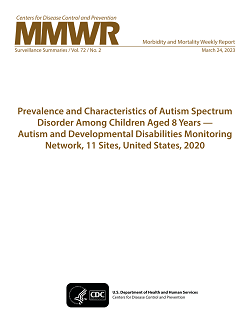Immediate Closures and Violations Identified During Routine Inspections of Public Aquatic Facilities - Network for Aquatic Facility Inspection Surveillance, Five States, 2013.
IF 37.3
1区 医学
Q1 PUBLIC, ENVIRONMENTAL & OCCUPATIONAL HEALTH
引用次数: 10
Abstract
PROBLEM/CONDITION Aquatic facility-associated illness and injury in the United States include disease outbreaks of infectious or chemical etiology, drowning, and pool chemical-associated health events (e.g., respiratory distress or burns). These conditions affect persons of all ages, particularly young children, and can lead to disability or even death. A total of 650 aquatic facility-associated outbreaks have been reported to CDC for 1978-2012. During 1999-2010, drownings resulted in approximately 4,000 deaths each year in the United States. Drowning is the leading cause of injury deaths in children aged 1-4 years, and approximately half of fatal drownings in this age group occur in swimming pools. During 2003-2012, pool chemical-associated health events resulted in an estimated 3,000-5,000 visits to U.S. emergency departments each year, and approximately half of the patients were aged <18 years. In August 2014, CDC released the Model Aquatic Health Code (MAHC), national guidance that can be adopted voluntarily by state and local jurisdictions to minimize the risk for illness and injury at public aquatic facilities. REPORTING PERIOD COVERED 2013. DESCRIPTION OF SYSTEM The Network for Aquatic Facility Inspection Surveillance (NAFIS) was established by CDC in 2013. NAFIS receives aquatic facility inspection data collected by environmental health practitioners when assessing the operation and maintenance of public aquatic facilities. This report presents inspection data that were reported by 16 public health agencies in five states (Arizona, California, Florida, New York, and Texas) and focuses on 15 MAHC elements deemed critical to minimizing the risk for illness and injury associated with aquatic facilities (e.g., disinfection to prevent transmission of infectious pathogens, safety equipment to rescue distressed bathers, and pool chemical safety). Although these data (the first and most recent that are available) are not nationally representative, 15.7% of the estimated 309,000 U.S. public aquatic venues are located in the 16 reporting jurisdictions. RESULTS During 2013, environmental health practitioners in the 16 reporting NAFIS jurisdictions conducted 84,187 routine inspections of 48,632 public aquatic venues. Of the 84,187 routine inspection records for individual aquatic venues, 78.5% (66,098) included data on immediate closure; 12.3% (8,118) of routine inspections resulted in immediate closure because of at least one identified violation that represented a serious threat to public health. Disinfectant concentration violations were identified during 11.9% (7,662/64,580) of routine inspections, representing risk for aquatic facility-associated outbreaks of infectious etiology. Safety equipment violations were identified during 12.7% (7,845/61,648) of routine inspections, representing risk for drowning. Pool chemical safety violations were identified during 4.6% (471/10,264) of routine inspections, representing risk for pool chemical-associated health events. INTERPRETATION Routine inspections frequently resulted in immediate closure and identified violations of inspection items corresponding to 15 MAHC elements critical to protecting public health, highlighting the need to improve operation and maintenance of U.S. public aquatic facilities. These findings also underscore the public health function that code enforcement, conducted by environmental health practitioners, has in preventing illness and injury at public aquatic facilities. PUBLIC HEALTH ACTION Findings from the routine analyses of aquatic facility inspection data can inform program planning, implementation, and evaluation. At the state and local level, these inspection data can be used to identify aquatic facilities and venues in need of more frequent inspections and to select topics to cover in training for aquatic facility operators. At the national level, these data can be used to evaluate whether the adoption of MAHC elements minimizes the risk for aquatic facility-associated illness and injury. These findings also can be used to prioritize revisions or updates to the MAHC. To optimize the collection and analysis of aquatic facility inspection data and thus application of findings, environmental health practitioners and epidemiologists need to collaborate extensively to identify public aquatic facility code elements deemed critical to protecting public health and determine the best way to assess and document compliance during inspections.公共水产设施例行检查中发现的立即关闭和违规行为——水产设施检查监督网络,五个州,2013。
问题/状况:在美国,与水生设施相关的疾病和伤害包括传染病或化学病因的疾病爆发、溺水和与游泳池化学物质相关的健康事件(例如,呼吸窘迫或烧伤)。这些疾病影响到所有年龄段的人,特别是幼儿,并可能导致残疾甚至死亡。1978-2012年期间,向疾病预防控制中心报告的与水生设施有关的暴发共650起。1999年至2010年期间,美国每年约有4000人死于溺水。溺水是1-4岁儿童受伤死亡的主要原因,这一年龄组中大约一半的致命溺水发生在游泳池。2003-2012年期间,泳池化学品相关的健康事件导致每年约3000 - 5000人到美国急诊科就诊,其中约一半患者为老年人。系统描述:水产设施检验监测网络(NAFIS)由CDC于2013年建立。NAFIS接收由环境卫生从业人员在评估公共水生设施的操作和维护时收集的水生设施检查数据。本报告介绍了五个州(亚利桑那州、加利福尼亚州、佛罗里达州、纽约州和德克萨斯州)的16个公共卫生机构报告的检查数据,重点介绍了被认为对最大限度地减少与水生设施相关的疾病和伤害风险至关重要的15个MAHC要素(例如,防止传染性病原体传播的消毒、救援遇险游泳者的安全设备和泳池化学品安全)。虽然这些数据(第一次和最新的可用数据)不具有全国代表性,但在美国估计的30.9万个公共水上场馆中,有15.7%位于16个报告的司法管辖区。结果:2013年,16个NAFIS辖区的环境卫生从业人员对48,632个公共水上场所进行了84,187次例行检查。在84,187份单个水上活动场所的例行检查记录中,78.5%(66,098份)包含立即关闭的数据;12.3%(8 118次)例行检查导致立即关闭,因为至少有一次确定的违规行为对公众健康构成严重威胁。在11.9%(7,662/64,580)的常规检查中,发现消毒剂浓度违规,这表明存在与水产设施相关的传染病暴发的风险。在12.7%(7,845/61,648)的例行检查中,发现安全设备违规,存在溺水风险。在4.6%(471/10 264)的例行检查中,发现了泳池化学品安全违规行为,这表明存在发生泳池化学品相关健康事件的风险。解释:例行检查经常导致立即关闭并发现违反与保护公众健康至关重要的15个MAHC要素相对应的检查项目,突出了改善美国公共水生设施运营和维护的必要性。这些调查结果还强调了环境卫生从业人员执行守则在预防公共水生设施的疾病和伤害方面的公共卫生功能。公共卫生行动:水生设施检查数据的常规分析结果可以为规划、实施和评估提供信息。在州和地方一级,这些检查数据可用于确定需要更频繁检查的水上设施和场地,并选择水上设施操作员培训的主题。在国家层面,这些数据可用于评估采用MAHC要素是否能最大限度地减少与水生设施相关的疾病和伤害的风险。这些发现还可用于确定修订或更新MAHC的优先次序。为了优化水生设施检查数据的收集和分析,从而应用调查结果,环境卫生从业人员和流行病学家需要广泛合作,确定对保护公众健康至关重要的公共水生设施规范要素,并确定在检查期间评估和记录遵守情况的最佳方式。
本文章由计算机程序翻译,如有差异,请以英文原文为准。
求助全文
约1分钟内获得全文
求助全文
来源期刊

Mmwr Surveillance Summaries
PUBLIC, ENVIRONMENTAL & OCCUPATIONAL HEALTH-
CiteScore
60.50
自引率
1.20%
发文量
9
期刊介绍:
The Morbidity and Mortality Weekly Report (MMWR) Series, produced by the Centers for Disease Control and Prevention (CDC), is commonly referred to as "the voice of CDC." Serving as the primary outlet for timely, reliable, authoritative, accurate, objective, and practical public health information and recommendations, the MMWR is a crucial publication. Its readership primarily includes physicians, nurses, public health practitioners, epidemiologists, scientists, researchers, educators, and laboratorians.
 求助内容:
求助内容: 应助结果提醒方式:
应助结果提醒方式:


